A pulley-rope-mass arrangement is shown in fig. Find the acceleration of block when the masses are set free to move. Assume that the pulley and the ropes are ideal.

Appling the equations of motion for pulleys and blocks
For ….(i)
For …(ii)
For pulley
For pulley …(iv)
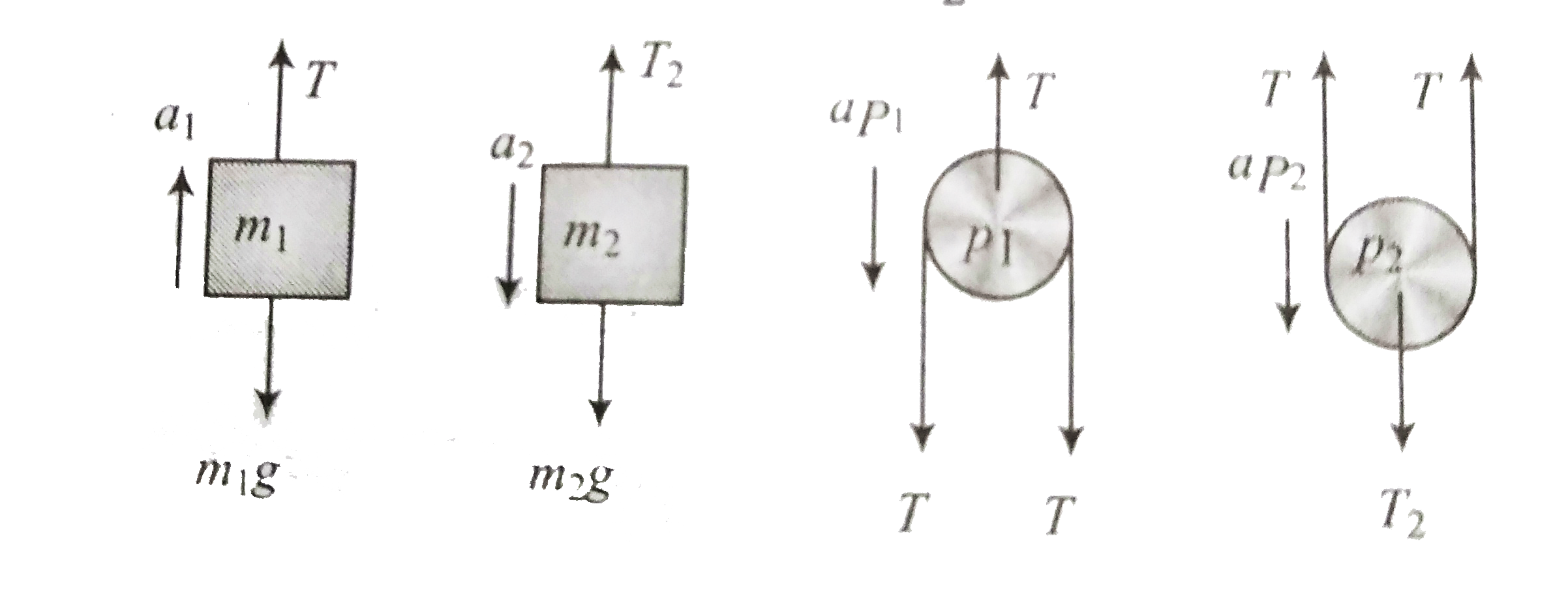
From Eq (iii), , from (iv), and from (i) and (ii). , also . Hence, blocks and both will move down with acceleration g downward direction.
Calculating and
Constraint relations: Consider the reference line and the position vectors of the pulley and masses as shown in fig .write the length of the rope in terms of position vector and differentiate it to obtain the relation between acceleration of the masses and pulleys.
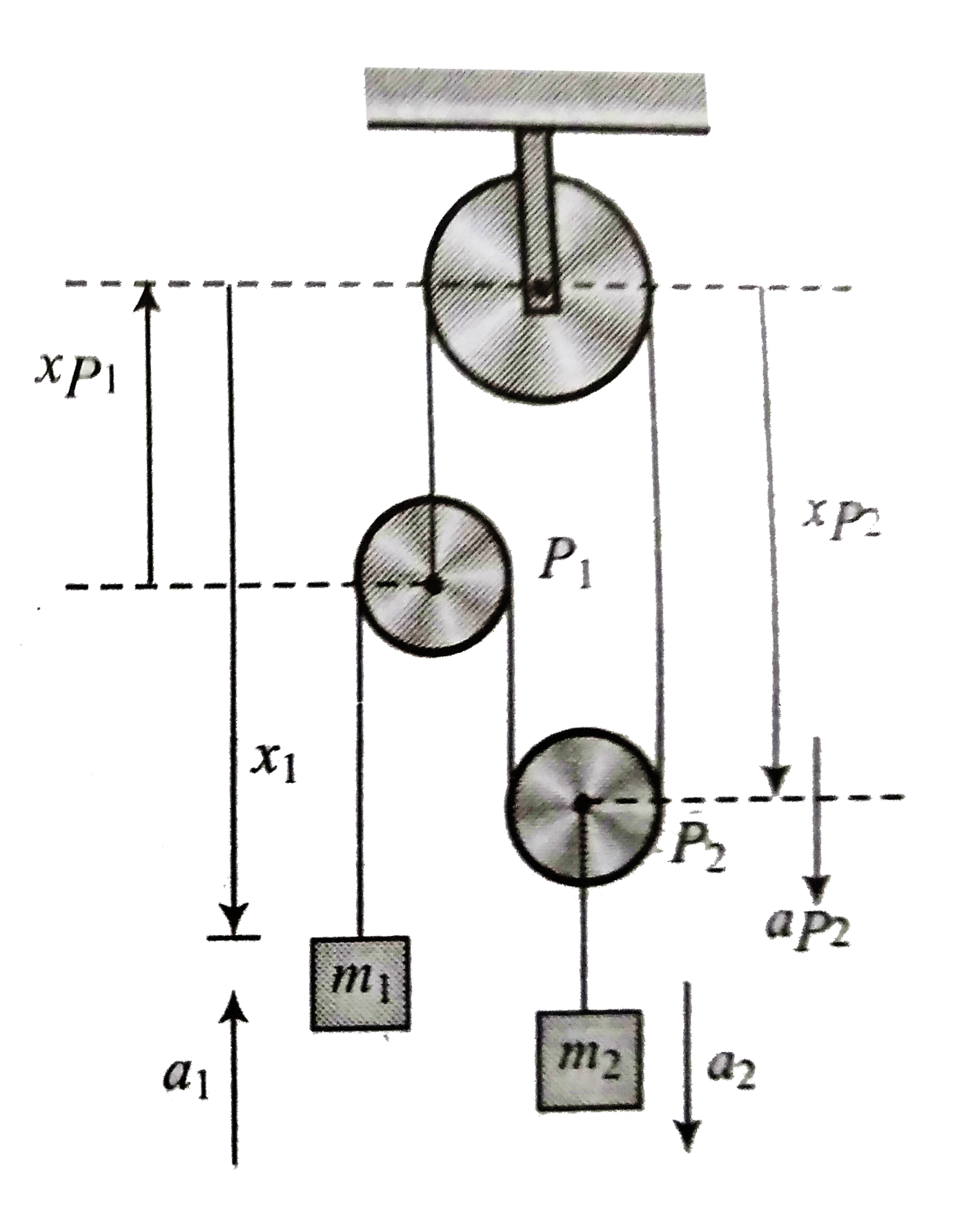
* For the length of the string connecting and not to change and for this rope not to slacken, .
* Length of the string connecting to not to change and for this rope not to slacken:
Differentiating this equation w.r.t twice we get
.
Topper's Solved these Questions
- NEWTON'S LAWS OF MOTION 1BOOK - CENGAGE PHYSICS ENGLISHCHAPTER - NEWTON'S LAWS OF MOTION 1EXERCISE - Solved Examples
11 Videos
- NEWTON'S LAWS OF MOTION 1BOOK - CENGAGE PHYSICS ENGLISHCHAPTER - NEWTON'S LAWS OF MOTION 1EXERCISE - Exercise 6.1
11 Videos
- MISCELLANEOUS VOLUME 2BOOK - CENGAGE PHYSICS ENGLISHCHAPTER - MISCELLANEOUS VOLUME 2EXERCISE - INTEGER_TYPE
10 Videos
- NEWTON'S LAWS OF MOTION 2BOOK - CENGAGE PHYSICS ENGLISHCHAPTER - NEWTON'S LAWS OF MOTION 2EXERCISE - Integer type
1 Videos
Similar Questions
In the pulley-block arrangement shown in figure , find the relation between acceleration of blocks A and B
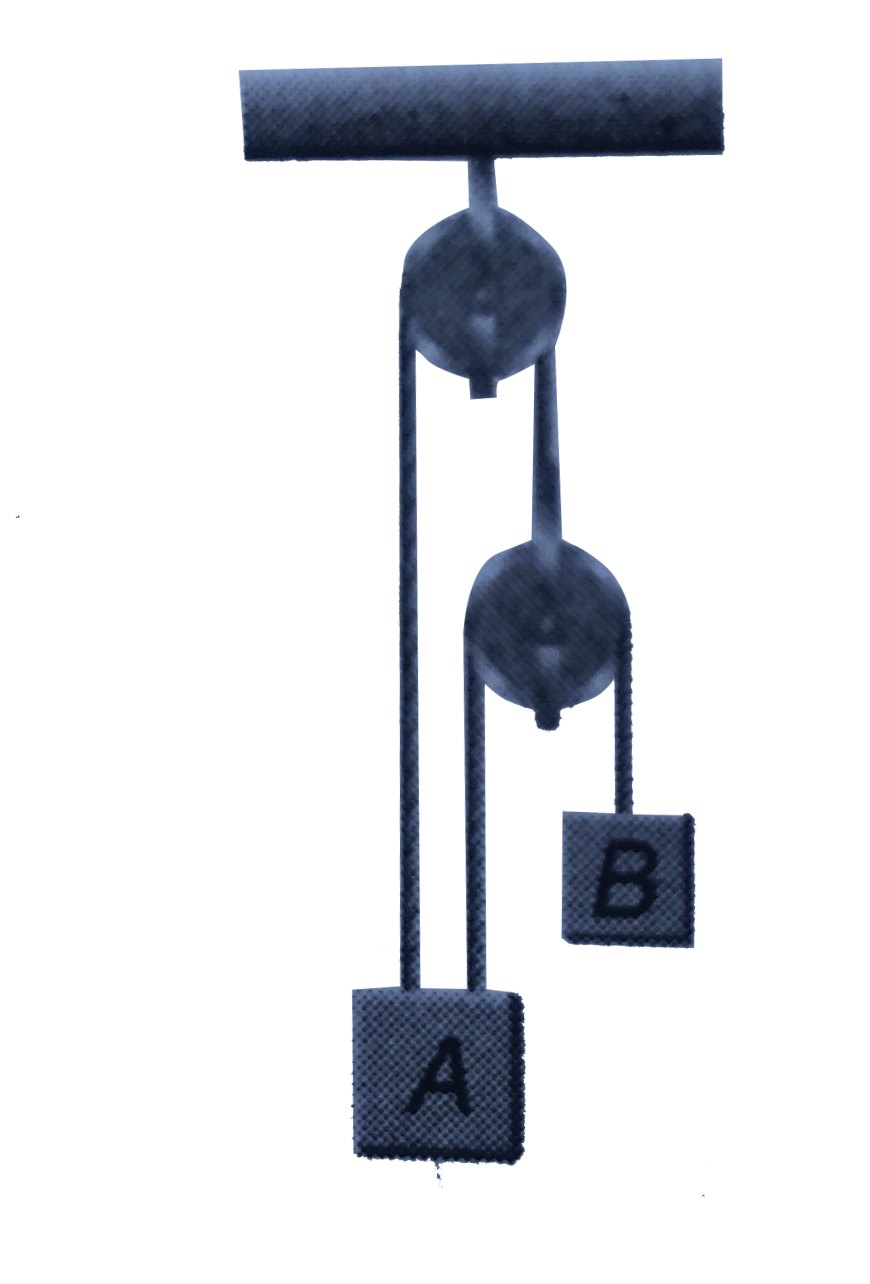
View SolutionIn the pulley-block arrangement shown in figure , find the relation between acceleration of blocks A and B

View SolutionFind the acceleration of blocks in fig. The pulley and the string are massless.
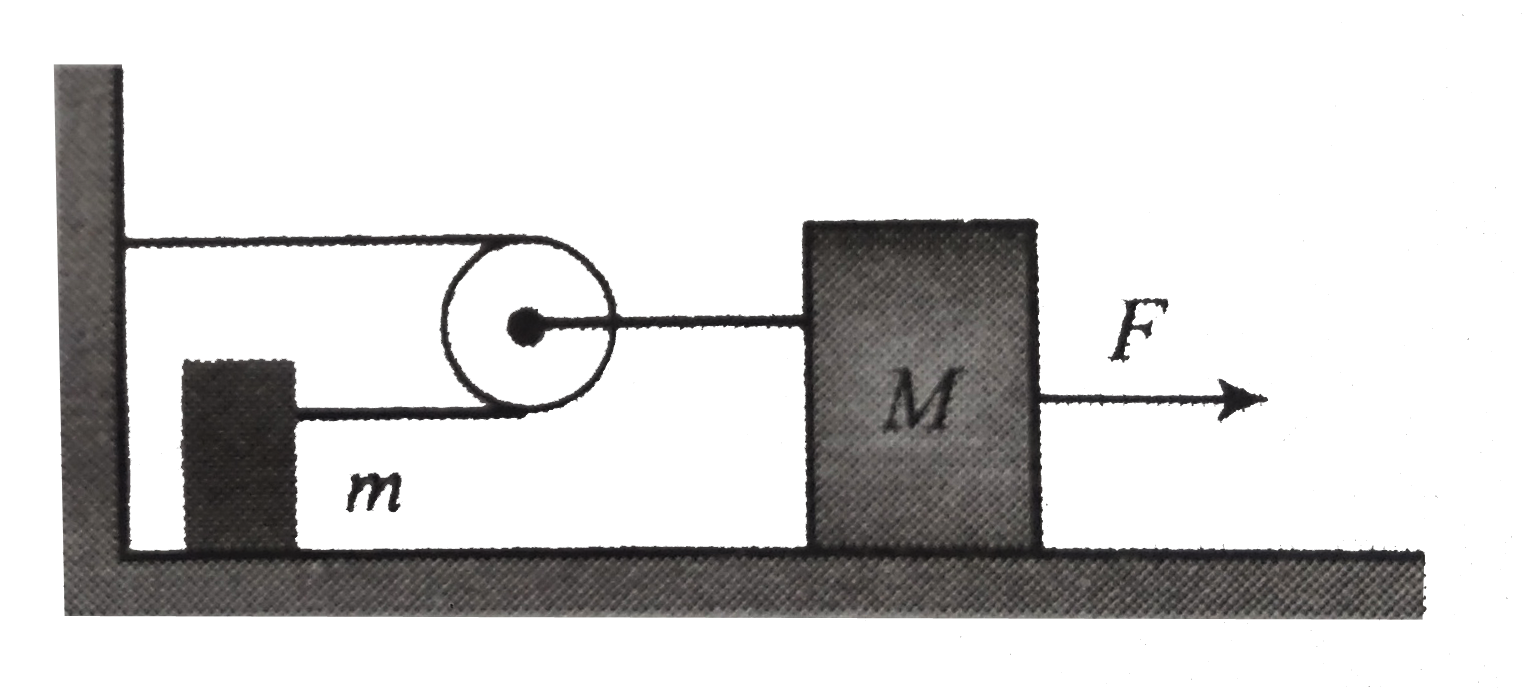
View SolutionFor given system as shown in figure, the acceleration of block of mass m(m=M/2) kept on smooth table when the system is released from rest is (Strings and pulleys are ideal)
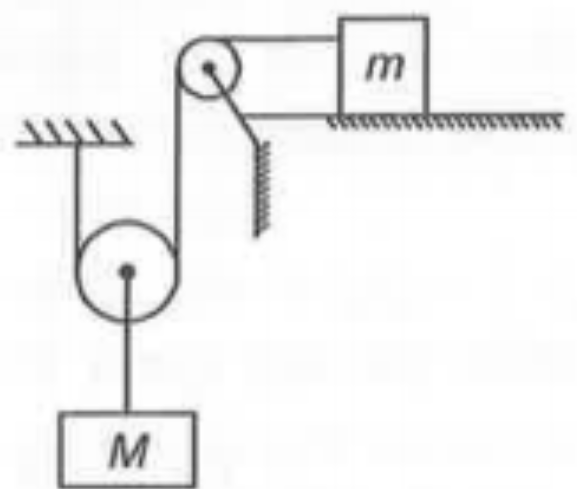
View SolutionThe velocities of A and B shown in fig. Find the speed (in ms−1) of block C. (Assume that the pulleys and string are ideal).
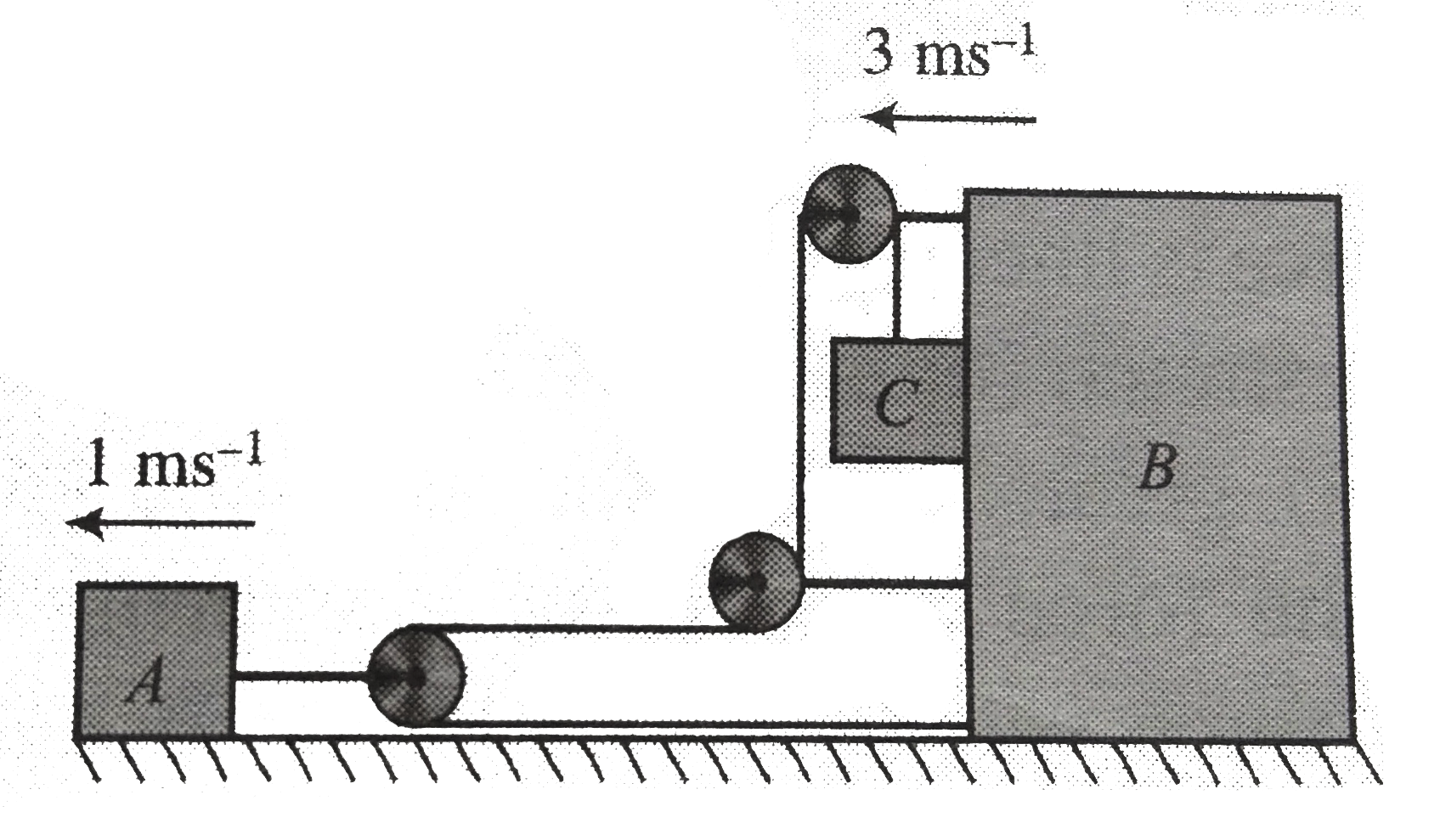
View SolutionFor given system as shown in figure, the acceleration of block of mass m(m=M2) kept on smooth table when the system is released from rest is (Strings and pulleys are ideal)
View SolutionIn the arrangement shown, the mass m will ascend with an acceleration ( Pulley and rope are massless)
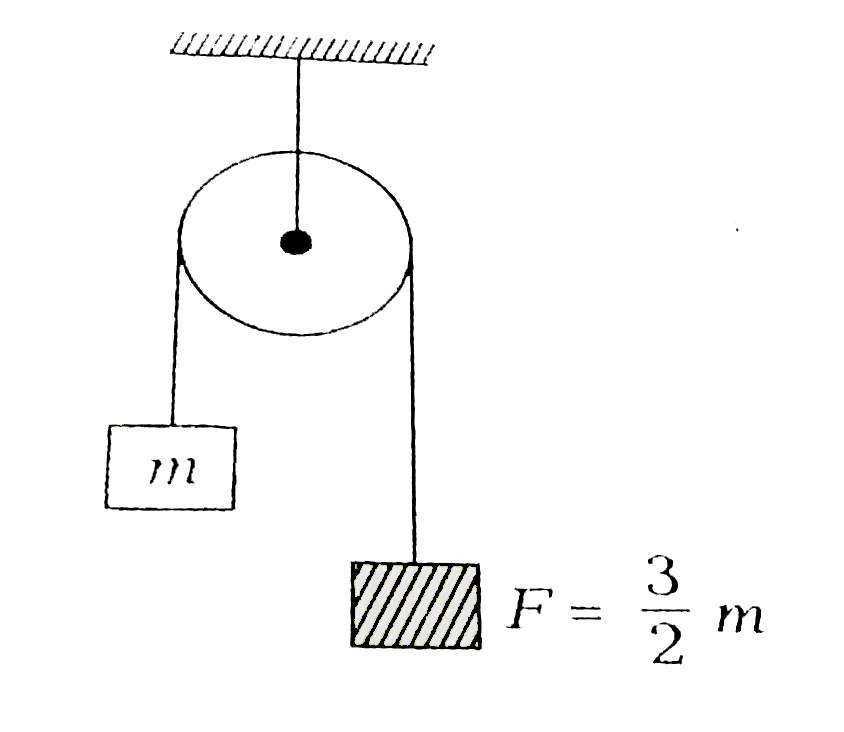
View SolutionIn the arrangement shown, the mass m will ascend with an acceleration ( Pulley and rope are massless)

View Solutionfind the acceleration of the block of mass M in the situation shown in figure. All the surfaces are frictionless and the pulleys and the string are light.

View SolutionA block of mass m=5kg is placed on the wedge of mass M=32kg as shown in the figure. Find the acceleration of wedge with respect to ground. (Neglect any type of friction. Spring and pulley are ideal)
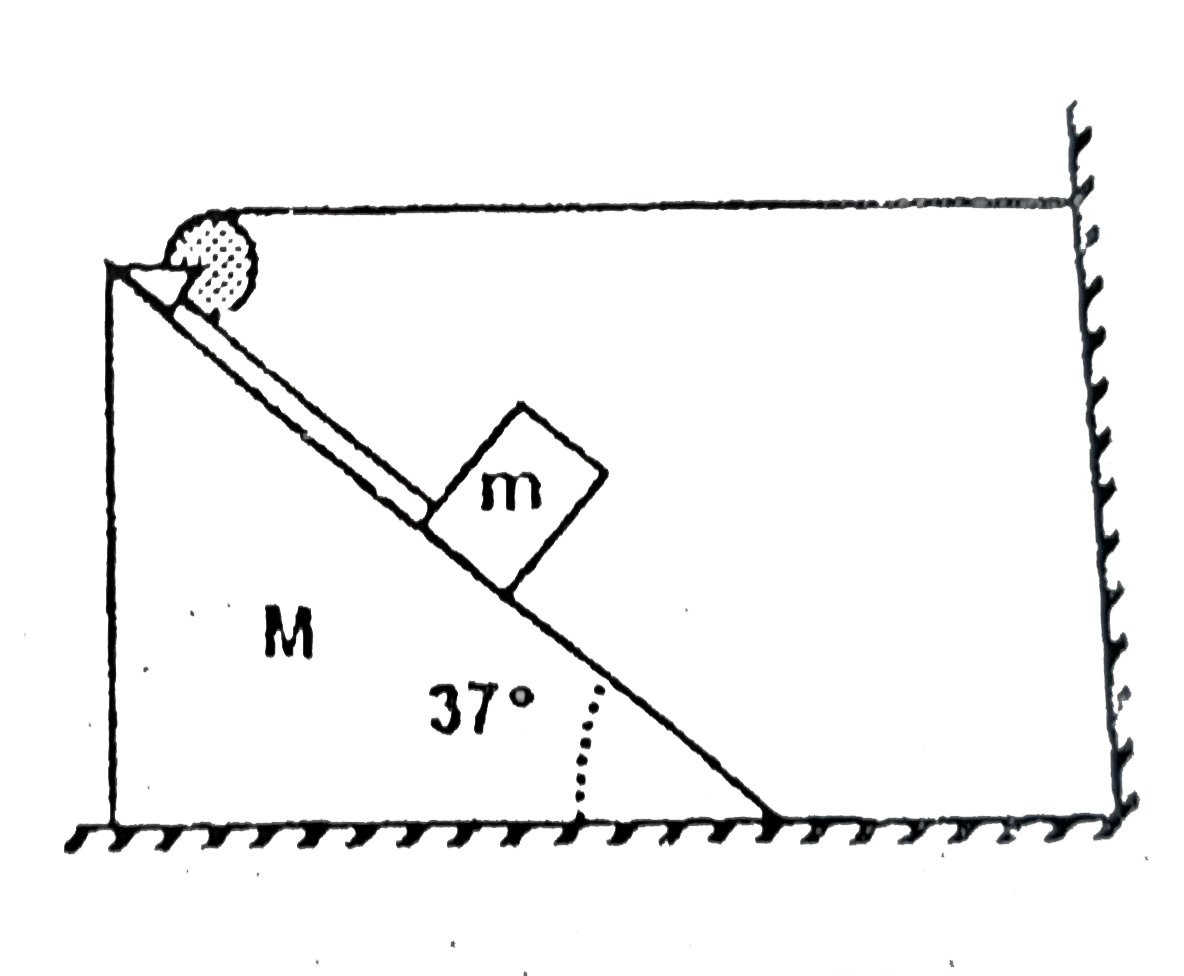
View Solution
